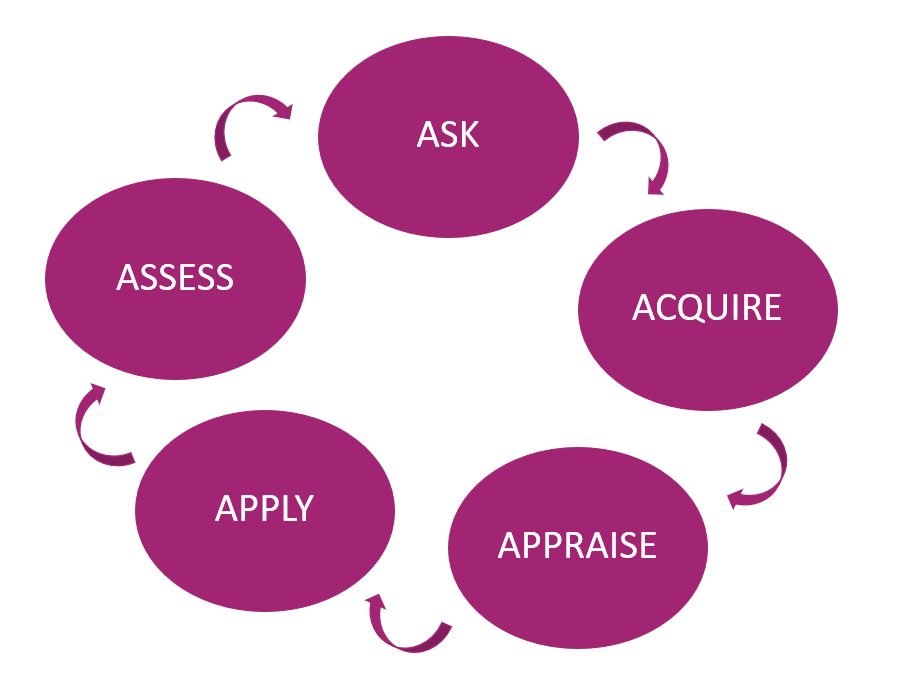2. What is EBVM?
2. What is EBVM?
At its core, evidence-based veterinary medicine (EBVM) is a structured and explicit method that helps us make decisions, in clinical practice as well as other areas where veterinarians might work.
EBVM has been explained as five main steps which form a cycle. The cycle takes its principles from human evidence-based medicine (Heneghan and Badenhoch, 2006) and has been used to produce this course.
Figure 1: EBVM Cycle - The Five Steps

As you progress through this course you will learn about each of the five steps in more detail:
- Ask – defining an answerable clinical question that is of interest
- Acquire – finding out if evidence exists to answer the question and acquiring that evidence
- Appraise – assessing the quality of the relevant evidence found
- Apply – implementing the evidence into clinical practice where appropriate
- Assess– evaluating the impact of the implementation and changes in clinical practice
Where evidence does exist to answer our clinical question, we move through the stages of the EBVM cycle, enabling us to construct our own evidence-based decisions. This process incorporates more than just finding the “best” available evidence:
Evidence-based veterinary medicine is the use of the best relevant evidence in conjunction with clinical expertise to make the best possible decision about a veterinary patient. The circumstances of each patient, and the circumstances and values of the owner/carer, must also be considered when making an evidence-based decision (Centre for Evidence-Based Veterinary Medicine, CEVM ).
Figure 2: Decision-making in EBVM

Where evidence does not exist for our clinical question, we identify gaps in the evidence base. This is referred to as ‘zero evidence’ and will be explored in more detail throughout the course.
Many of the terms used in defining EBVM are included for a specific reason but may also raise questions. For instance:
- What is meant by ‘best’ available evidence?
- How do we balance our patient’s circumstances with our owner’s circumstances?
- What importance do we place on our own clinical expertise as compared to what is available in the literature?
- How do we deal with ‘zero evidence’?
We will seek to answer these questions as we proceed through this course – and perhaps come up with a few more!
In this introductory section, we will discover the history of evidence-based medicine (EBM) and the subsequent development of EBVM. We will guide you on your EBVM journey, exploring the clinical applications of EBVM and how to address the challenges you may face.